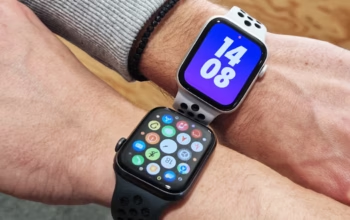The e-commerce landscape continues to evolve at a rapid pace, driven by technological advancements and shifting consumer behaviors. As we move through 2024, several key trends are emerging that promise to shape the future of online retail. This article explores these trends, delving into the technologies and consumer behaviors that are redefining the e-commerce sector. By understanding these changes, businesses can stay ahead of the curve and capitalize on new opportunities.
Emerging Technologies in E-Commerce
- Artificial Intelligence and Machine Learning
Artificial intelligence (AI) and machine learning (ML) are revolutionizing e-commerce by enhancing personalization, improving customer service, and optimizing supply chains. AI-driven algorithms analyze vast amounts of data to provide personalized product recommendations, creating a tailored shopping experience. According to a report by McKinsey, “Personalization can deliver five to eight times the ROI on marketing spend and lift sales by 10% or more.”
Chatbots and virtual assistants, powered by AI, are becoming increasingly sophisticated, providing instant customer support and handling various queries. This not only improves the customer experience but also reduces operational costs for businesses.
- Augmented Reality (AR) and Virtual Reality (VR)
AR and VR technologies are transforming the way consumers shop online by providing immersive and interactive experiences. AR allows customers to visualize products in their own environment before making a purchase, which is particularly beneficial for industries such as furniture and fashion. VR, on the other hand, enables virtual store tours, giving consumers the feeling of shopping in a physical store from the comfort of their homes.
IKEA, a pioneer in this space, has leveraged AR to help customers see how furniture would look in their homes. Michael Valdsgaard, Leader of Digital Transformation at IKEA, stated, “AR is the beginning of a profound change in how we interact with our surroundings and products, making the shopping experience more engaging and informative.”
- Blockchain Technology
Blockchain is making waves in e-commerce by enhancing transparency, security, and efficiency. This technology provides a decentralized and tamper-proof ledger of transactions, which is particularly useful for supply chain management. Consumers can trace the origin of products, ensuring authenticity and ethical sourcing.
Additionally, blockchain enables secure and efficient cross-border payments, reducing the reliance on traditional banking systems and lowering transaction costs. As noted by Don Tapscott, co-author of “Blockchain Revolution,” “Blockchain is the first native digital medium for peer-to-peer value exchange, which has the potential to disrupt and transform industries, including e-commerce.”
- Voice Commerce
Voice commerce, facilitated by smart speakers and virtual assistants like Amazon’s Alexa and Google Assistant, is gaining traction as a convenient way for consumers to shop online. Voice-activated shopping is expected to grow significantly, driven by improvements in natural language processing and AI.
Juniper Research estimates that voice commerce will reach $80 billion in sales by 2023. Mark Taylor, Chief Experience Officer at Capgemini, emphasized the potential of voice commerce, saying, “Voice assistants will revolutionize how brands and consumers interact, making the shopping experience more seamless and intuitive.”
- 5G Technology
The rollout of 5G technology is set to revolutionize e-commerce by providing faster and more reliable internet connections. This will enhance the online shopping experience, enabling quicker page loads, smoother video streaming, and more responsive AR/VR applications. As a result, consumers can enjoy a more engaging and efficient shopping experience.
Shifting Consumer Behaviors
- Sustainability and Ethical Shopping
Sustainability has become a key consideration for modern consumers, with a growing emphasis on ethical shopping. According to a survey by Nielsen, 73% of global consumers say they would change their consumption habits to reduce their environmental impact. E-commerce businesses are responding by adopting sustainable practices, such as eco-friendly packaging, carbon-neutral shipping, and ethical sourcing.
Patagonia, a leader in sustainable retail, emphasizes its commitment to environmental responsibility. Yvon Chouinard, founder of Patagonia, stated, “We’re in business to save our home planet. Our mission drives everything we do, including how we source materials and produce our products.”
- Mobile Commerce
Mobile commerce (m-commerce) continues to dominate the e-commerce landscape, driven by the increasing use of smartphones for shopping. According to Statista, mobile commerce sales are expected to account for 72.9% of total e-commerce sales by 2021. This trend highlights the importance of optimizing e-commerce websites and applications for mobile devices, ensuring a seamless and user-friendly experience.
Businesses are also leveraging mobile payment solutions, such as Apple Pay and Google Wallet, to provide secure and convenient checkout options. As noted by Julie Ask, Vice President at Forrester, “Mobile commerce is not just a trend; it’s the future of retail, driven by the convenience and immediacy that mobile devices offer.”
- Social Commerce
Social commerce, the integration of social media and e-commerce, is becoming increasingly popular. Platforms like Instagram, Facebook, and Pinterest are offering shopping features that allow users to purchase products directly through their social media feeds. This seamless integration of social media and shopping creates new opportunities for brands to engage with consumers and drive sales.
As stated by Mark Zuckerberg, CEO of Facebook, “We’re focused on making shopping more seamless and empowering anyone, from a small business owner to a global brand, to use our apps to connect with customers and grow their business.”
- Subscription-Based Models
Subscription-based e-commerce models are gaining popularity, offering consumers convenience and personalized product experiences. From beauty boxes to meal kits, subscription services cater to a variety of consumer needs and preferences. This model fosters customer loyalty and provides businesses with a steady stream of recurring revenue.
Birchbox, a pioneer in subscription-based beauty products, emphasizes the value of personalization. Katia Beauchamp, co-founder of Birchbox, stated, “Our goal is to help customers discover new products they love, tailored to their individual preferences, making beauty shopping more enjoyable and less overwhelming.”
- Omnichannel Shopping
Omnichannel shopping, which integrates online and offline retail experiences, is becoming the norm. Consumers expect a seamless shopping experience across multiple channels, whether they’re browsing online, shopping in-store, or using a mobile app. This trend highlights the importance of providing a consistent and cohesive brand experience across all touchpoints.
Nordstrom, known for its innovative omnichannel strategy, offers services like buy online, pick up in-store (BOPIS) and curbside pickup. Erik Nordstrom, CEO of Nordstrom mentioned that the importance of omnichannel retail.
“Customers don’t think in terms of channels; they just want a seamless shopping experience that fits their needs and lifestyle,” he said.
Conclusion
The future of e-commerce in 2024 is shaped by emerging technologies and shifting consumer behaviors. AI and machine learning are driving personalization and efficiency, while AR and VR provide immersive shopping experiences. Blockchain enhances transparency and security, and voice commerce offers a convenient shopping option. The rollout of 5G technology will further enhance the online shopping experience.
On the consumer side, sustainability and ethical shopping are becoming more important, mobile commerce continues to dominate, and social commerce is creating new opportunities for engagement. Subscription-based models are fostering customer loyalty, and omnichannel shopping is becoming the norm.
By understanding and embracing these trends, businesses can stay ahead in the competitive e-commerce landscape, providing exceptional experiences that meet the evolving needs and preferences of modern consumers. As we move forward, the integration of advanced technologies and a focus on sustainability and personalization will be key drivers of success in the e-commerce industry.
(eno)
















